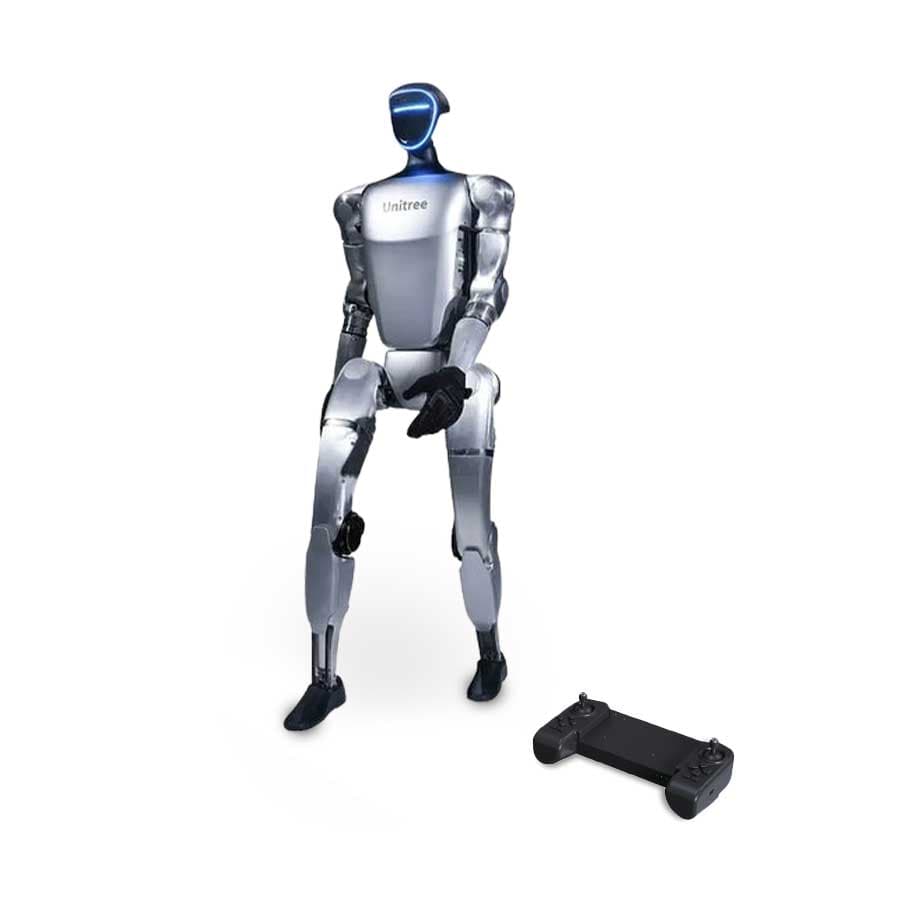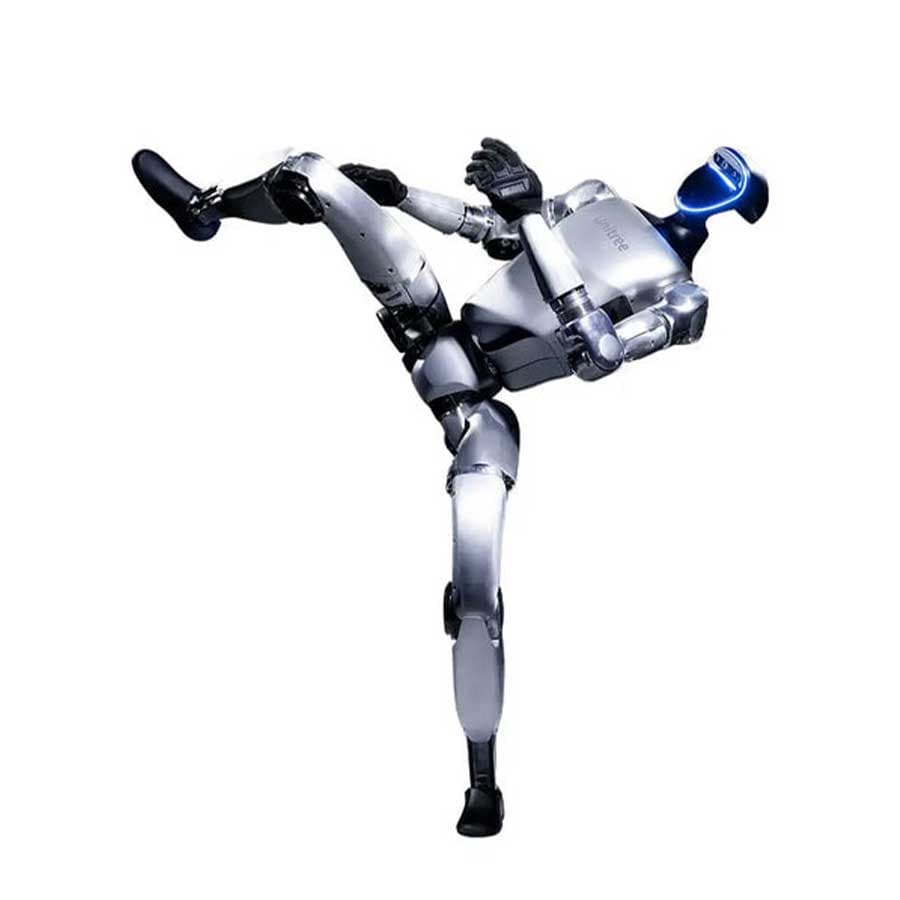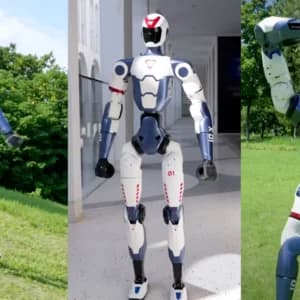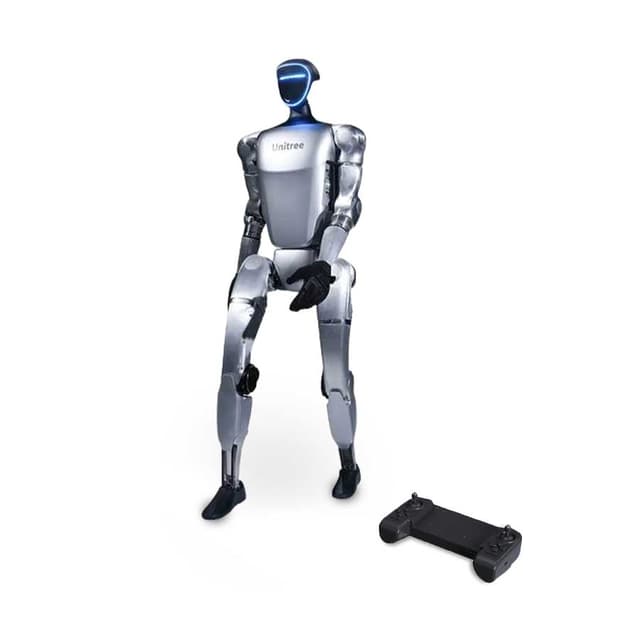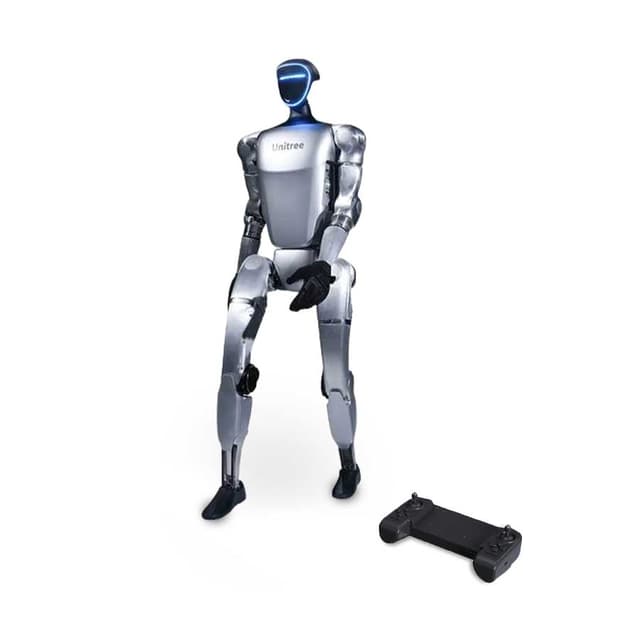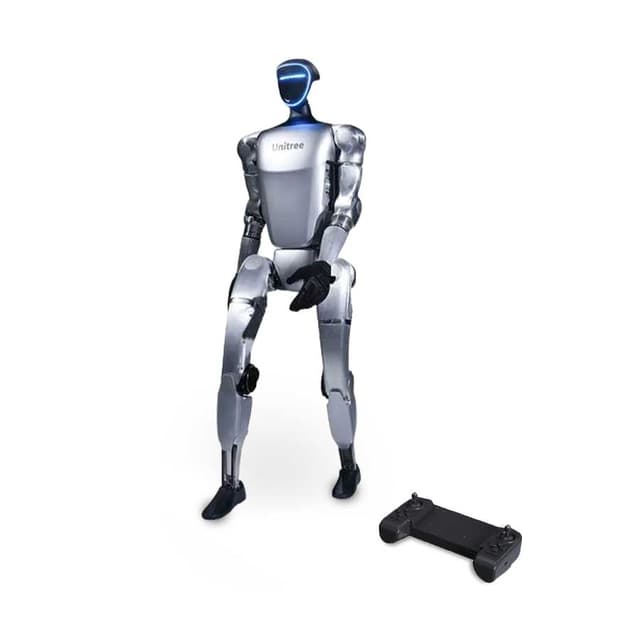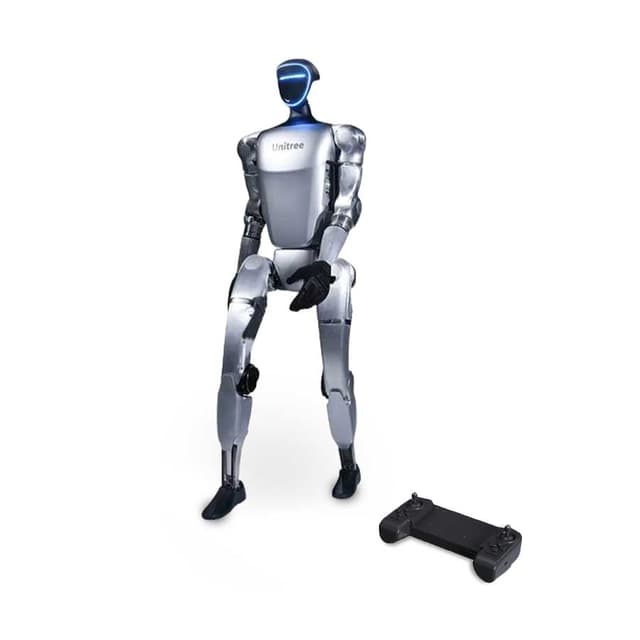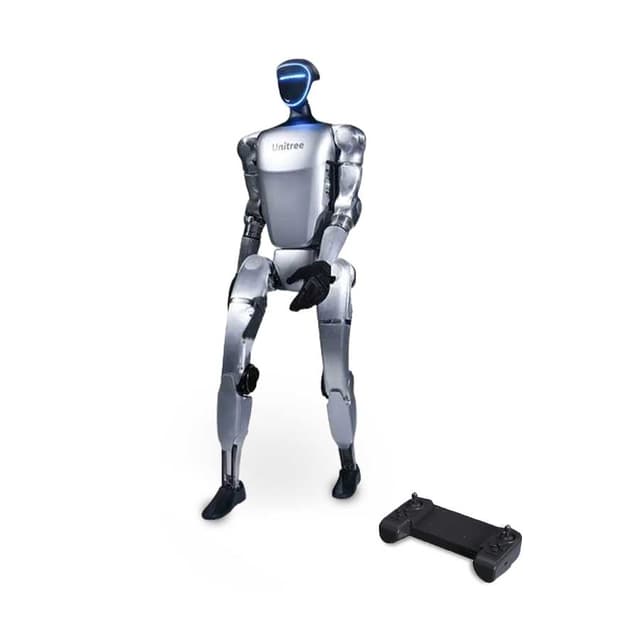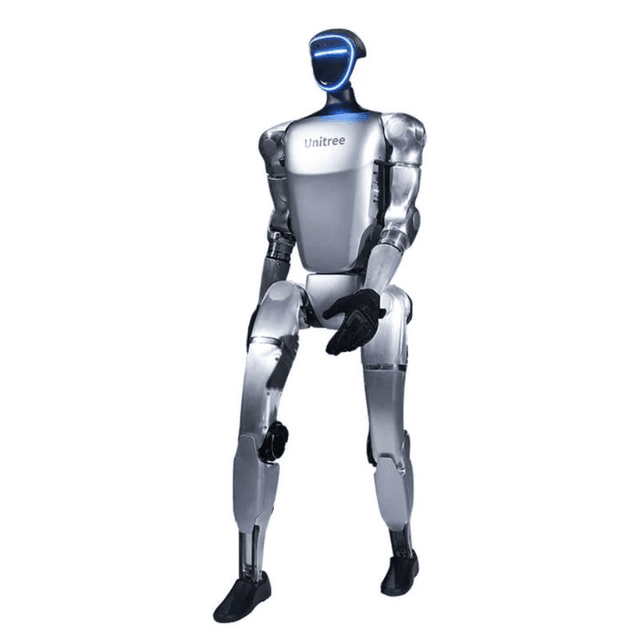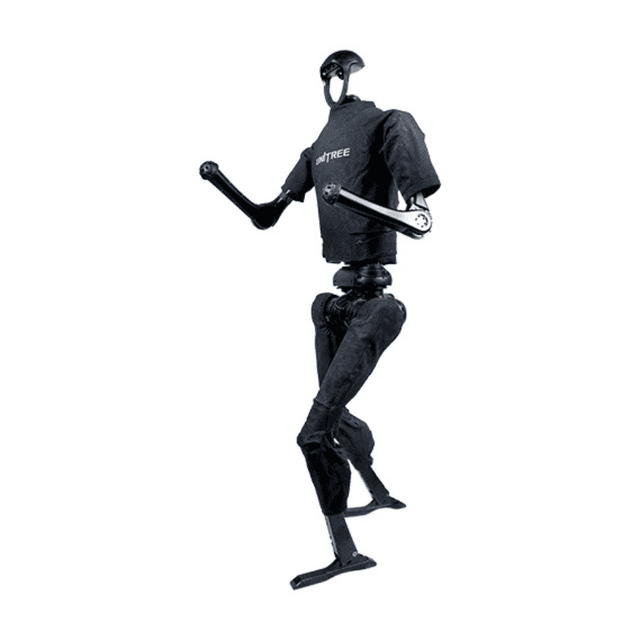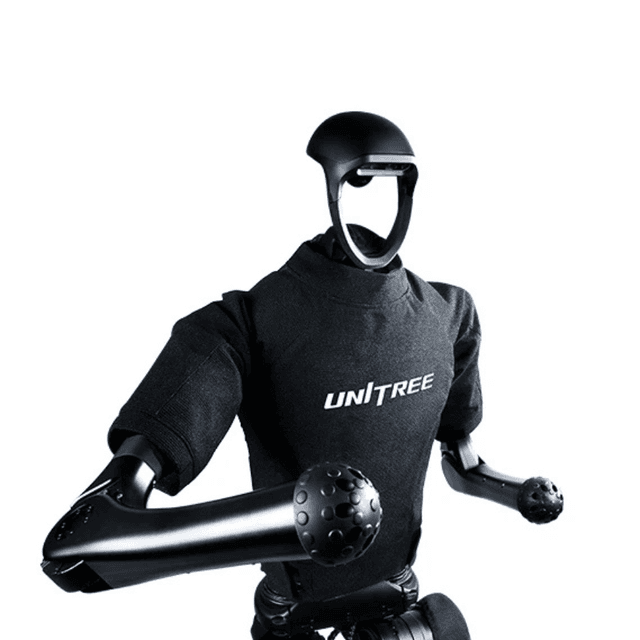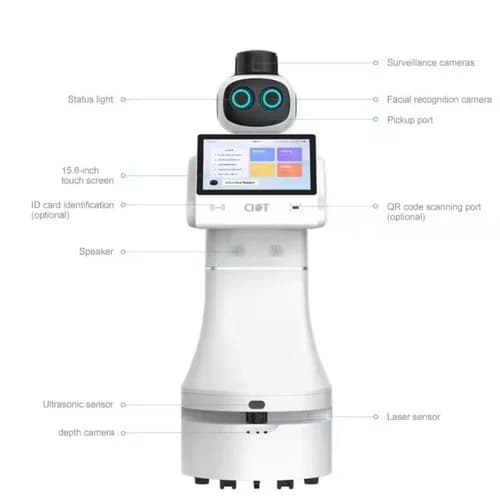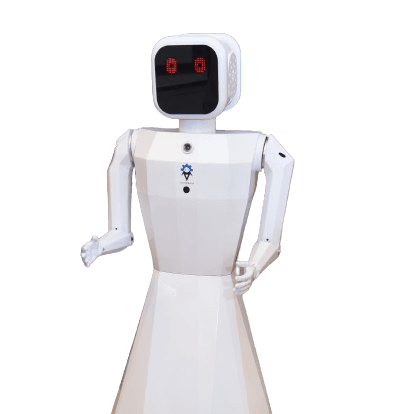Unitree G1 Edu-U6 Humanoid Robot – Available at Everse
Discover the Unitree G1 Edu-U6 Humanoid Robot, a state-of-the-art robotic platform available through Everse. Engineered by Unitree, the G1 Edu-U6 combines cutting-edge AI, exceptional mobility, and precise manipulation, making it an ideal solution for researchers, educators, and innovators in robotics, healthcare, and beyond.
Human-Like Agility Through Exceptional Joint Flexibility
The Unitree G1 Edu-U6 sets a new benchmark in humanoid robot mobility with an impressive structure featuring 23 to 43 joint motors and 41 degrees of freedom. Its upgraded waist (3 DOF) and advanced arm articulation (7 DOF per arm) empower the robot with human-like range and fluidity of motion, allowing it to perform complex physical maneuvers such as dynamic walking, running, and advanced gestural expressions. These enhancements support finely tuned balance and posture control, enabling the robot to navigate cluttered environments and adapt to uneven terrain with remarkable stability. The skeletal design, crafted from a lightweight alloy and composite frame, combines rigidity with flexibility, optimizing performance while reducing overall mass to approximately 35 kg. With each limb independently controllable, the G1 Edu-U6 offers extraordinary responsiveness and adaptability, paving the way for experiments in bipedal locomotion, motion learning, and task automation. Its maximum knee joint torque of 120N.m further allows for powerful yet controlled lower-limb movements, making it suitable for carrying payloads, climbing inclines, or performing repetitive mechanical operations. By emulating the natural kinematics of a human body, the G1 Edu-U6 brings physical robotics one step closer to seamless real-world integration. Whether used in AI research or physical interaction modeling, its advanced mechanical architecture provides a reliable, realistic foundation for studying human-like motion in machines.
Precision Handling with Five-Finger Dexterous Hands
One of the most defining features of the Unitree G1 Edu-U6 is its high-precision manipulation system, made possible by two third-party five-finger dexterous hands (RH56DFTP-2R and RH56DFTP-2L). Each hand incorporates 17 tactile sensors, offering sophisticated force-position hybrid control that allows the robot to interact with objects in a remarkably human-like way. From gently grasping delicate materials to executing complex manipulations like tool use, button pressing, or precision assembly, the G1’s hands replicate the nuances of human touch and control. These hands allow the robot to sense pressure variations, surface texture, and contact force, enabling adaptive grip strength and fine motor skills. Such tactile feedback is essential for operations where delicate handling is required, such as sorting fragile items, assisting in rehabilitation therapies, or conducting fine-tuned lab procedures. Coupled with the robot’s coordinated limb movement and high-speed processing, the dexterous hands support a wide range of applications that go beyond typical robotic graspers or two-finger grippers. Developers and researchers can program multi-phase manipulation sequences using sensor input to adjust grip or reposition objects mid-task. This capability opens new frontiers for research into robotic manipulation, haptics, and even human-robot collaboration in intricate tasks. By integrating this advanced manipulation technology, the G1 Edu-U6 serves as a platform not only for mechanical engineering exploration but also for breakthroughs in tactile robotics, prosthetics research, and human-environment interfacing.
AI-Driven Learning and Adaptability
At the core of the Unitree G1 Edu-U6’s intelligence lies UnifoLM, the Unitree Robot Unified Large Model—an AI architecture that supports imitation learning, reinforcement learning, and real-time collaborative intelligence. This robust AI framework enables the robot to continuously learn from its environment, adapt its behaviors, and refine its performance over time. Through imitation learning, the G1 can observe human actions and replicate them, a valuable feature for developing intuitive training systems or modeling human task execution. Reinforcement learning further enhances its capability by enabling it to improve performance through trial-and-error interactions, a method particularly effective for developing autonomous behaviors in dynamic or unstructured settings. The onboard computing power, housed within an integrated expansion dock rated at 100Tops, provides real-time inference capabilities that support vision processing, decision-making, and sensor fusion tasks. This processing unit also allows for high- and low-level secondary development, enabling developers to inject their own AI models, behavior trees, or control loops into the robot’s architecture. This degree of customization is critical for exploring cutting-edge research in adaptive robotics, cognitive systems, and robotic autonomy. Moreover, the integration of voice and image recognition technologies—including facial detection and object classification—positions the G1 as an intelligent, multimodal interface capable of responding to both verbal and visual inputs. These capabilities make it well-suited for interactive applications, ranging from socially assistive robotics to intelligent service agents and adaptive research platforms.
Customization and Development Ecosystem
The Unitree G1 Edu-U6 is designed with developers and research teams in mind, offering extensive support for customization, programming, and system integration. Its developer-friendly ecosystem includes a fully open SDK, a suite of APIs, and detailed technical manuals that facilitate both high- and low-level development. This flexibility empowers users to program the robot for specific behaviors, modify core functionalities, or integrate third-party modules and sensors. The built-in expansion dock not only supports intensive computing tasks but also accommodates various hardware extensions, including additional cameras, LiDAR units, or robotic peripherals. Developers can write and deploy custom algorithms for control, navigation, or vision using standard programming environments, while real-time data from joint encoders, tactile arrays, and depth cameras can be used for advanced machine learning or sensor fusion experiments. This platform-centric design is ideal for universities, research institutes, and advanced training programs where a balance of stability and customizability is essential. Whether designing a novel gait algorithm, building autonomous manipulation protocols, or testing interactive control methods, the G1 Edu-U6 provides the tools and interfaces required for advanced robotics R&D. The platform's support for both onboard and remote operation also makes it suitable for teleoperation experiments, swarm robotics, and cross-platform integrations. Altogether, the G1 Edu-U6 offers not only a powerful physical system but also a comprehensive and extensible software environment tailored to innovation.
Integrated Systems for Reliable Real-World Operation
To support its advanced mechanical and AI systems, the Unitree G1 Edu-U6 incorporates robust power and connectivity systems that ensure reliable and sustained operation in real-world environments. The robot is powered by a 9000mAh rechargeable lithium-ion battery that delivers approximately 1–2 hours of runtime, depending on activity intensity. A local air-cooling system keeps internal temperatures stable, even under high computational loads or extended usage. Fast-charging capability minimizes downtime between sessions, making it efficient for classroom demonstrations, lab testing, or field deployment. For communication and integration, the G1 includes Wi-Fi and Bluetooth connectivity, enabling seamless pairing with laptops, cloud systems, and IoT devices. This allows users to stream sensor data, monitor performance metrics, or push software updates wirelessly. Advanced sensor arrays—including 3D LiDAR, depth cameras, and tactile sensors—further expand the robot’s environmental awareness, supporting complex navigation, object manipulation, and user interaction in dynamic settings. With voice recognition, natural language processing, and visual input analysis, the G1 Edu-U6 becomes a fully multimodal platform capable of understanding and reacting to human intent. These integrated systems make the robot especially effective in demanding applications like healthcare assistance, hazardous material handling, and immersive entertainment installations. Whether used on-site or remotely, the robot’s internal architecture ensures smooth, stable operation with a user-centered design that balances performance, flexibility, and safety. The G1 Edu-U6 thus presents itself as a highly capable, durable, and intelligent solution ready to meet the evolving challenges of next-generation robotics.
Key Features
- Unparalleled Flexibility – With 23 to 43 joint motors and 41 degrees of freedom (DOF), including upgraded waist (3 DOF) and arm (7 DOF per arm) articulation, the G1 Edu-U6 delivers human-like agility for navigating complex environments.
- Precision Manipulation– Equipped with two third-party five-finger dexterous hands (RH56DFTP-2R, RH56DFTP-2L), each with 17 tactile sensors, the G1 enables delicate, human-like object handling through force-position hybrid control.
- Advanced AI Technology – Powered by UnifoLM (Unitree Robot Unified Large Model), the G1 supports collaborative intelligence, imitation, and reinforcement learning for evolving performance in diverse applications.
- Developer-Friendly Design – A built-in expansion dock with 100Tops computing power and support for high- and low-level secondary development, complete with AI algorithms and technical manuals, empowers developers to customize the robot for specific needs.
- Robust Connectivity & Support – Wi-Fi, Bluetooth, and comprehensive technical support ensure seamless integration and reliable operation for research and prototyping.
- Durable Power System – A 9000mAh lithium battery and local air-cooling system provide up to 1–2 hours of runtime, with fast charging for minimal downtime.
Applications
The Unitree G1 Edu-U6 is designed for innovation across multiple fields –
- Research & Development – Its flexible structure and advanced joint configurations make it a premier platform for studying locomotion, manipulation, and AI-driven robotics.
- Healthcare Assistance – The G1’s dexterous hands and precise control enable tasks like handling sensitive equipment or assisting in rehabilitation, showing promise for surgical and therapeutic applications.
- Hazardous Environments– With remote control capabilities, the G1 is suited for inspections or material handling in dangerous settings like disaster zones or nuclear facilities.
- Entertainment & Performance – Its lifelike movements make it ideal for interactive performances or theme park installations, engaging audiences with dynamic capabilities.
- Education & Training – A valuable tool for teaching robotics, AI, and engineering, the G1’s programmable features support hands-on learning in academic settings.
Unitree G1 Edu-U6 in the Lineup
The G1 Edu-U6 stands out in Unitree’s portfolio with 41 DOF, upgraded from the standard G1’s 23–43 joint motors, and advanced features like five-finger dexterous hands and a 120N.m knee joint torque, surpassing earlier models like the G1 Edu-U1. Compared to the industrial-grade H1, the G1 Edu-U6 prioritizes precision and customization for research and education over heavy-duty tasks.
Technical Specifications
- Height – ~132 cm (estimated, based on human-scale design)
- Weight – ~35 kg (77 lb, based on G1 series specifications)
- Degrees of Freedom (DOF) – 41 joints (3 waist, 7 per arm, 6 per leg, plus dexterous hands)
- Joint Motors – 23–43 motors for enhanced agility
- Material – Lightweight alloy and composite frame
- Mobility – Advanced movements including walking, running, and complex gestures
- Knee Joint Torque – Maximum 120N.m
- Arm Load Capacity – Maximum 3 kg
- Dexterous Hands – Two third-party five-finger hands (RH56DFTP-2R, RH56DFTP-2L) with 17 tactile sensors per hand
- AI – UnifoLM (Unitree Robot Unified Large Model) with imitation and reinforcement learning
- Computing Power – 100Tops via built-in expansion dock, supporting secondary development
- Sensors – 3D LiDAR, depth cameras, and tactile sensor arrays
- Voice Recognition – Natural language command processing
- Image Recognition – Face and object detection
- Battery – 9000mAh rechargeable lithium-ion (1–2 hours runtime)
- Charging – Fast-charging system
- Connectivity – Wi-Fi, Bluetooth
- Development Support– Open SDK, APIs, and comprehensive technical manuals for high- and low-level secondary development
- Warranty – One-year warranty for the entire machine
- Use Cases – Research, healthcare, hazardous environments, entertainment, education
Why Shop with Everse?
Everse is your trusted retailer for advanced robotics, offering the Unitree G1 Edu-U6 with exceptional customer support and expertise. Our team is dedicated to helping you find the perfect robotic solution for your research, educational, or creative projects. With Everse, you gain access to cutting-edge technology backed by reliable service and a one-year warranty. Shop with confidence and join the future of robotics.
Connect With Us
Ready to explore the Unitree G1 Edu-U6? Contact us via WhatsApp or follow us on Instagram, YouTube, and LinkedIn for updates and demonstrations.
Unlock the potential of advanced robotics with the Unitree G1 Edu-U6, available now at Everse.
Specifications of Unitree G1 Edu -U6 – Humanoid Robot
- Height, Width, and Thickness (Stand)
- G1: 1520×450×200mm
- G1 EDU: 1520×450×200mm
- Height, Width, and Thickness (Fold)
- G1: 690×450×200mm
- G1 EDU: 690×450×200mm
- Weight (With Battery)
- G1: About 35kg
- G1 EDU: About 35kg
- Total Degree of Freedom (Joint Freedom)
- G1: 23
- G1 EDU: 23–43
- Single Leg Degrees of Freedom
- G1: 6
- G1 EDU: 6
- Waist Degrees of Freedom
- G1: 1
- G1 EDU: 1 + (Optional 2 additional)
- Single Arm Degrees of Freedom
- G1: 5
- G1 EDU: 6
- Single Hand Degrees of Freedom
- G1: /
- G1 EDU: 7 (Optional force control of three-fingered hand)
- Additional Hand Features (G1 EDU Only)
- 2 optional additional wrist degrees of freedom
- Three-Fingered Dexterous Hand Dex3:
- Thumb has 4 active degrees of freedom
- Index finger has 2 active degrees
- Middle finger has 5 active degrees
- Dex3 can optionally be installed with tactile sensors array
- Joint Output Bearing
- G1: Industrial grade crossed roller bearings (high precision, high load capacity)
- G1 EDU: Industrial grade crossed roller bearings (high precision, high load capacity)
- Joint Motor
- G1: Low inertia high-speed internal rotor PMSM
- G1 EDU: Low inertia high-speed internal rotor PMSM
- Maximum Torque of Knee Joint
- G1: 90N.m
- G1 EDU: 120N.m
- Arm Maximum Load
- G1: About 2kg
- G1 EDU: About 3kg
- Calf + Thigh Length
- G1: 0.84m
- G1 EDU: 0.84m
- Arm Span
- G1: About 0.45m
- G1 EDU: About 0.45m
- Extra Large Joint Movement Space
- G1:
- Waist joint: ±115°
- Knee joint: ±90°
- Hip joints: P=±15°, R=±90°, Y=±180°
- G1 EDU:
- Waist joint: Z=±115°, X=±45°, Y=±30°
- Knee joint: ±90°
- Hip joints: P=±45°, R=±170°, Y=±180°
- Wrist joint: R=±90°, Y=±90°
- G1:
- Full Joint Hollow Electrical Routing
- G1: YES
- G1 EDU: YES
- Joint Encoder
- G1: Dual encoder
- G1 EDU: Dual encoder
- Cooling System
- G1: Local air cooling
- G1 EDU: Local air cooling
- Power Supply
- G1: 13-string lithium battery
- G1 EDU: 13-string lithium battery
- Basic Computing Power
- G1: 9-core high-performance CPU
- G1 EDU: 8-core high-performance CPU
- Sensing Sensor
- G1: Depth Camera + 3D LiDAR
- G1 EDU: Depth Camera + 3D LiDAR
- 4 Microphone Array
- G1: YES
- G1 EDU: YES
- 5W Speaker
- G1: YES
- G1 EDU: YES
- WiFi 6, Bluetooth 5.2
- G1: YES
- G1 EDU: YES
- High Computing Power Module
- G1: /
- G1 EDU: NVIDIA Jetson Orin
- Smart Battery (Quick Release)
- G1: 9000mAh
- G1 EDU: 9000mAh
- Charger
- G1: 54V 5A
- G1 EDU: 54V 5A
- Manual Controller
- G1: YES
- G1 EDU: YES
- Battery Life
- G1: About 2h
- G1 EDU: About 2h
- Upgraded Intelligent OTA
- G1: YES
- G1 EDU: YES
- Secondary Development [3]
- G1: YES
- G1 EDU: YES

